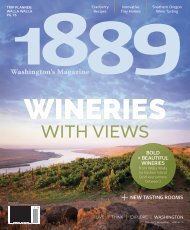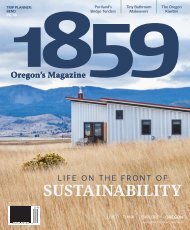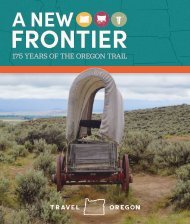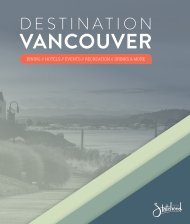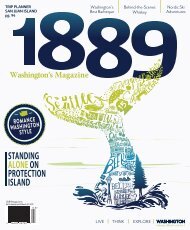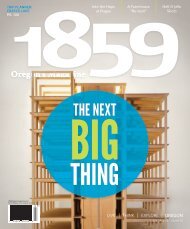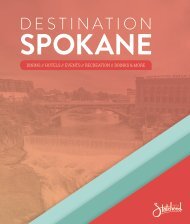1889 August | September 2018
Create successful ePaper yourself
Turn your PDF publications into a flip-book with our unique Google optimized e-Paper software.
what i’m working on<br />
Washingtonians from<br />
around the state are<br />
being trained to monitor<br />
bumble bee populations.<br />
Mapping Washington’s Bumble Bees<br />
Volunteers work to monitor the<br />
state’s bumble bee population<br />
interview by Nick Engelfried<br />
FOR RICH HATFIELD, senior conservation<br />
biologist with the Xerces Society for<br />
Invertebrate Conservation, the Pacific<br />
Northwest Bumble Bee Atlas marks the<br />
culmination of two decades of work<br />
studying wild pollinators. The project will<br />
enlist volunteers to monitor bumble bee<br />
populations across the region, gathering<br />
data for conservation projects. In early<br />
June, Hatfield led a training for volunteers<br />
in Wenatchee in partnership with the<br />
Washington Department of Fish and<br />
Wildlife. Another Washington training will<br />
take place west of the Cascades in 2019.<br />
How did you end up studying pollinators?<br />
Between undergrad and grad school I worked with Dr. Claire<br />
Kremen, then at the Center for Conservation Biology at<br />
Stanford University, comparing insect pollinators on organic<br />
versus conventional agricultural lands (Dr. Kremen is now at<br />
University of California, Berkeley). Through that project, I<br />
realized pollinators and benefits they provide create a strong<br />
conservation message. You can attach a dollar value to<br />
pollinators due to their clear ecosystem services, an economic<br />
piece that was missing from many other conservation projects.<br />
That really got me interested in continuing to study bees.<br />
What’s the significance of bumble bees?<br />
Not everyone realizes honey bees are a non-native species<br />
imported from Europe. We have about 3,600 North American<br />
native bees, including around fifty bumble bees. However,<br />
many native bees are tiny, and in grad school, I realized how<br />
hard it is to identify most without doing a whole PhD on them.<br />
Bumble bees are a workable group to identify and<br />
good ambassadors for native pollinators. They’re also<br />
major pollinators of crops like tomatoes, blueberries<br />
and cranberries. Eighty-five percent of plants require<br />
46 <strong>1889</strong> WASHINGTON’S MAGAZINE AUGUST | SEPTEMBER <strong>2018</strong>




